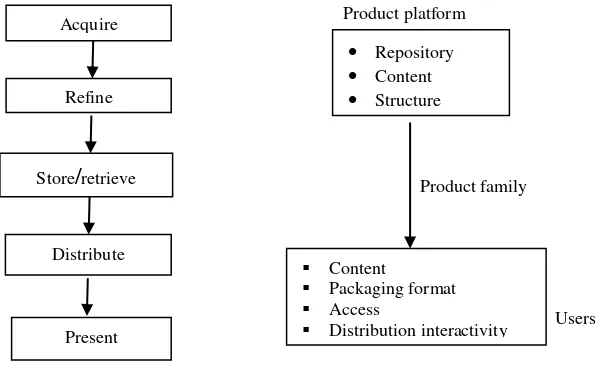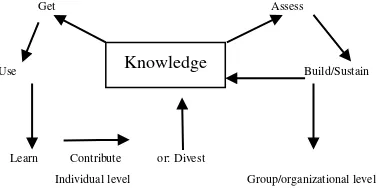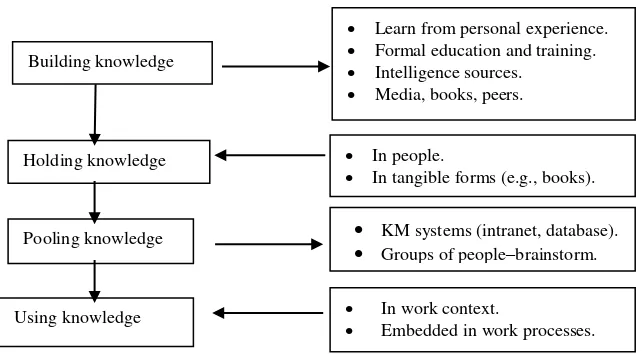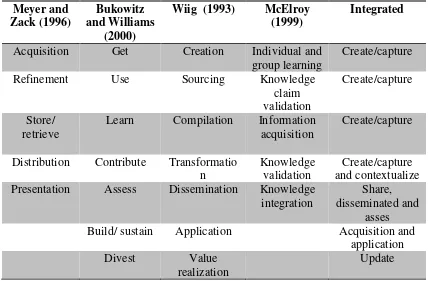A Comprehensive Analysis of Knowledge Management Cycles
Full text
Figure




Related documents
In this context, knowledge management is defined as “enabling organizational learning and it supports activities including knowledge acquisition, generation, sharing and use”
The levels of measure were from 1= ‘unaware’ to 5 = ‘strongly aware’.Questions on KM activities undertaken in quantity surveying firms (knowledge acquisition, knowledge
people to everything project knowledge portal people, technology Table 1: Knowledge management systems in Schlumberger, based on data from (Etkind et
There are three interlinked knowledge management activities which are Knowledge acquisition, application and utilization (Chen. & Burstein, 2006) which may contribute
Abstract: The purpose of this research is to analyze the influence of Knowledge Management process (knowledge acquisition, knowledge sharing and knowledge
Knowledge acquisition constitutes an ontology development activity (Gómez-Pérez et al. It is of particular importance in methods for ontology new development, which do not
The use and application of knowledge management process as step by step following: (1) tacit knowledge acquisition (2) discovery knowledge (3) capture knowledge (4) knowledge
Great amount of recent studies in this research area focus on issues of generic knowledge processes such as knowledge acquisition, knowledge sharing and knowledge crea- tion [Chen

